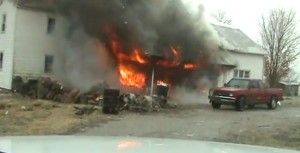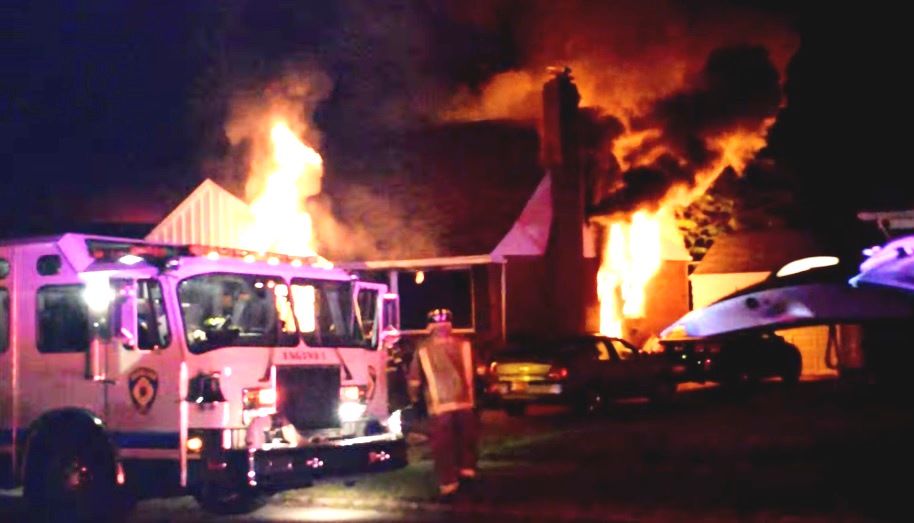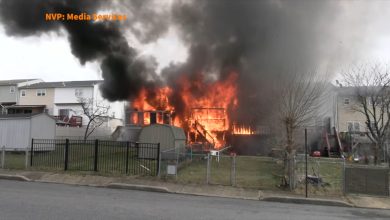NTSB says overworked Maryland State Police pilot to blame for the crash of Trooper 2. Also faults air traffic controllers along with MSP’s response to the crash. Report says there are lessons to be learned for search crews.
Previously released NTSB Interim Factual Summary
STATter911.com’s earlier coverage of this story here, here, here, here, here and here
By Bruce Leshan, WUSA9.com:
We finally know the most-likely cause of that horrible crash of a Maryland State Police helicopter.
The pilot, two medics, and an accident victim died a year ago –and just one teenager survived.
The National Transportation Safety Board is blaming pilot Stephen Bunker, who unexpectedly flew into a dense cloud bank, and then tried desperately to get below it.
He was looking so frantically for the ground that he ignored an altimeter that might have warned him he was about to crash into it.
But the Board also says a whole series of other mistakes by air traffic controllers contributed to the crisis.
“I wear the bracelet with everyone’s name on it,” says Jordan Wells, who was the only survivor. She’ll never forget the crash that killed her friend Ashley and three other people trying to rush the teens to a hospital.
“The look on Lippy’s face, then I heard something brush against the helicopter,” says Wells. “Then I blacked out because I broke this side of my face.”
 Wells came to the NTSB hearing, hoping the long investigation will help save other lives.
Wells came to the NTSB hearing, hoping the long investigation will help save other lives.
“You can only hope,” she says. “You can only pray that it will fix things and make them better.”
“The probable cause of this accident was the pilots attempt to regain visual conditions by performing a rapid descent,” the NTSB’s David Mayer told the board.
It was a miserable night, and the pilot briefly considered refusing the mission. But based in part on five hour old weather data, he decided to go anyway. And that bad data was just one of the “numerous procedural deficiencies” the NTSB blamed on air traffic controllers, “…including unresponsiveness, inattention, and poor radar vectoring,” said Mayer.
Bunker had almost three decades of experience, but it had been a long time since he’d practiced an instrument landing.
And when he suddenly flew into heavy fog, he failed to follow procedures.
The NTSB is recommending that all public air ambulances be regulated just like commercial aircraft. It’s also pushing for formal risk assessments on every flight, and for new technology like night vision goggles and terrain awareness warning systems.
“We want to make sure when they’re going to save a life, they don’t lose their life, or risk other lives,” says chair Deborah Hersman.
The NTSB also criticized the Maryland State Police for its performance after the crash. It took some time for the agency to even realize the chopper had gone down — and then an hour or so to find it. If not for the heroic efforts of a couple of troopers, it might have taken hours longer to discover the crash scene — even though it was right on an electronic map at Syscom, but just hard to read.
The Maryland State Police says it has already corrected many of the problems, and is working on others. And the NTSB praised the agency for its cooperation.
Below are NTSB finding that deal directly with the search for the downed helicopter:
20. Had two Maryland State Police aviation employees not pursued their own search effort, locating the accident site would likely have taken several more hours than it did.
21. The incident commander’s lack of aviation knowledge diminished the effectiveness of search and rescue activities.
22. Maryland State Police troopers and System Communications Center personnel were insufficiently equipped and trained to conduct a search involving global positioning system coordinates, and this hindered their ability to locate the site of the wreckage.
23. Neither Prince George’s County nor Maryland State Police dispatchers fully understood the importance of obtaining distance and bearing information, as well as the cell tower location, before releasing a location obtained from cell phone ‘pinging;’ this lack of understanding led dispatchers to provide the cell phone tower’s simple street address without context to all units involved in the search. This distracted and confused units already searching a more likely location.
24. The Federal Aviation Administration air traffic control’s inability to produce timely location data also hampered search and rescue efforts.
25. Knowledge of the disjointed search and rescue efforts and the techniques eventually employed to locate the accident site could provide valuable lessons to agencies, such as Helicopter Emergency Medical Services dispatch centers, 911 dispatch centers, and fire, police, and sheriff’s departments, involved in search and rescue efforts.







